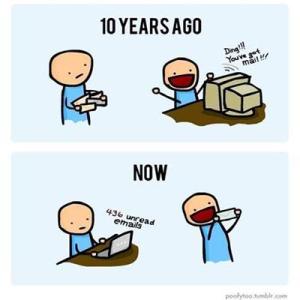Such excitement at C asa Helwig!! Today is Graduation Day!
asa Helwig!! Today is Graduation Day!
Pre-K graduation, that is.
The ceremony this morning was an exercise in bottled cuteness from start to finish – 45 tiny children flying one at a time onto a stage to be handed certificates as “most helpful,” “most musical,” “most curious,” and so on, all giving huge hugs to the teacher and big smiles to mommy and daddy out in the audience. One little boy was wearing a seersucker suit, complete with bow tie. Every little girl was wearing her Sunday best dress and pretty shoes – except, of course, MINE, who had insisted on wearing her pink cat costume (complete with pink-eared hoodie, pastel pink jeans, and tennis shoes). Since she refers to herself most often as “Supercat”, at first blush it had seemed like SUCH a good idea. Watching all the kids on stage, though, I found myself fighting a giant “mommy fail” feeling because she didn’t look like anyone else.
My child was fine. Deliriously ecstatic, in fact. She loved being a cat! She was extremely proud of being named “Most Cheerful” and loved every second of the attention from the teacher and the audience.
So why on earth did *I* have an uncontrollable urge to apologize for not dressing her in Sunday-go-to-meeting gear? I actually did it, too. I cornered the teacher before the ceremony, confessing, “I feel rotten for not getting with the program and dressing her up today.”
Fortunately, our teacher is a very smart lady. Her response was dead on: “She will have a lot more fun memories of being a cat today than she would of being trussed up in a dress she doesn’t particularly like.” SO TRUE!
So Supercat received her graduation certificate, and all was well. Hurrah for Supercat!
But this feeling was still bugging me. Why did I have an urge to apologize? I sifted it down to this: EXPECTATIONS.
There are certain cultural norms that come with a graduation. A cat suit is NOT among them. So when it was obvious that we were the ONLY ones in the class who did not meet that norm, I became fearful of standing out in a negative way. I got worried, EVEN THOUGH the outfit my child chose totally reflected her interests and her personality. Deep down, I was much more interested in “fitting in” than “letting her be herself”. My reaction was protective. Born of love and parental concern.
And completely unnecessary, unhelpful, and misguided.
Marketing guru Seth Godin wrote a piece this week applying this very idea to business, called “Remind You of Anything? Simple Typography for Non-professionals.” He was talking specifically about typography, but his thoughts apply to companies and entrepreneurs in general:
Norms exist. People have expectations about how people and businesses behave and look. If you divert from those norms and are different, you will stand out. Choose carefully where you amplify those “differences” so that they work for you instead of against you.
What does this have to do with work? A LOT, actually. Every single marketing director and business developer in professional services can learn something from Seth and my little Supercat (and my outsized reaction). The lesson comes when we assess where we fall on the EXPECTATIONS scale – when we know:
- The general norms in our marketplace about how firms like ours should behave
- What our firm’s culture really is (how do we interact with each other and our clients? What matters to us as a company? How do we show that to the world?)
- How the key individuals that represent the firm behave when they’re out in public
- Where the gaps lie between those cultural norms and how we really operate
If our reaction as marketers is to be protective – to serve as the guardian of a reputation based in cultural norms (where the firm is “a valued partner” and “high quality”, etc. etc.), without pointing out places where we are unique, we are playing it safe. Dangerously safe. If we’re focused on being “the best accounting firm” or “the best law firm” instead of “the best ‘us’, who happens to do great accounting or law”, the truth we tell will be culturally appropriate – AND BORING. If we work hard to make sure our firm fits with the “accepted notion” of the industry by using the same language and concepts to describe ourselves, we will at the very best look like A GOOD VERSION OF EVERYONE ELSE. Not compelling.
Yes, highlighting differences may turn off some potential clients. But telling the truth about the firm and its culture will also attract people who will be much more likely to stay, because they are a good fit.
Expectations are just a starting point, so we can see where we are different than the norm. Everything comes together (in family, in business – heck, in LIFE) when we allow our differences from the expected to shine. That’s the only way anyone will ever know just how much of a star we are.
Go Supercat go!








